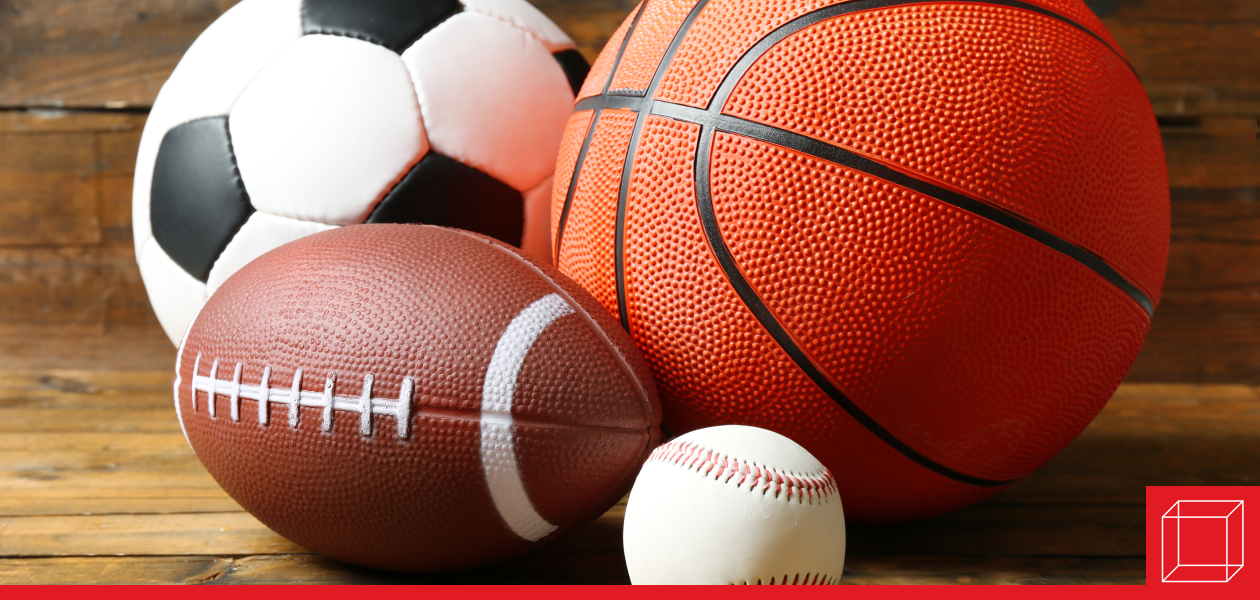Sustained High Performance: Optimizing The Executive Athlete
A holistic approach to performance optimization for executive athletes, incorporating physical, mental, spiritual, and emotional dimensions, supported by science-based tools and frameworks.

If you’re a sports fan, you’ve watched elite athletes perform at competitions and may have wondered how they do it. For example, how did Tom Brady win 7 Super Bowls, become Super Bowl MVP 5 times, and break an endless list of records? Moreover, how has he been lastingly successful over 23 seasons?[1]
Although most of us will never be elite athletes, we do want to be high performers at work and sustain that performance over time. Successful athletes need physical capabilities and “corporate athletes” i.e., working professionals who perform in the game of business, need strong mental capabilities. However, to achieve sustained high performance, both types of athletes need to be considered holistically as people with mental, physical, spiritual, and emotional capacities; they also need to balance exerting energy with rest/recovery.[2]
Below, we highlight three timely expansions to the idea of the “corporate athlete,”[3] introduced in the 1999 book The Corporate Athlete and later summarized in “The Making of a Corporate Athlete”[4] from the Harvard Business Review.
All decision-makers can be “executive athletes”
At its conception, “corporate athletes” were usually C-suite employees with lifetime careers in big corporate offices.[5] Nowadays, the landscape of work has changed. In the U.S., 33% of employees work from home[6] and change jobs much more frequently than before (i.e., 6 in 10 workers are quietly quitting).[7] Moreover, 20% of men and 18% of women are entrepreneurs.[8] Thus, athletes in the business world need not be “corporate”; anyone such as small business owners, freelancers, or nonprofit leaders who make executive decisions can be “executive athletes”.
Performance is dynamic and it fluctuates
In football, performance for each position may be measured by behaviors required such as the number of touchdown passes thrown by Tom Brady. In the workplace context, task performance is measured by behaviors included in one’s job description.[9]
Coaches or researchers may use individual differences such as a 4-40 sprint time for an athlete or IQ for an employee as predictors of who is likely to be a high performer. Indeed, research shows that those who are intelligent[1] and conscientious[2] are most likely to be high performers.
The “corporate athlete” idea suggests that high performers are those who harness the body (e.g., exercise), the emotions (e.g., listen to music), the mind (e.g., meditate), and the spirit (e.g., connect with deep values)[3] to be better performers than those who only focus on mental capabilities.
However, nowadays, researchers are studying work performance in a dynamic way.[4] Instead of comparing employees to each other and predicting which factors make one employee successful over another, researchers can compare employees to themselves (this is called a within-person investigation) and predict what factors help someone be a higher performer on a given day compared to their average day.
Indeed, 62% of the variance in task performance is explained by within-person variation.[5] Thus, it is critical to help all executive athletes understand how they can be the best versions of themselves for lasting high performance.
Science-based tools help optimize executive athletes
How can executives be their best selves each day? The whole person must be considered across mental, physical, spiritual, and emotional dimensions, but “optimizing” is about moving beyond the basics of dietary change, increased exercise, and rest/relaxation. It requires building resilience via a deep understanding of the person’s genes, environment, and lifestyle and an approach which treats issues at their root cause (i.e., functional medicine).
Moreover, once a personalized understanding is obtained, individuals can use science-based self-experimentation to enhance themselves (i.e., biohacking[6]). Indeed, Tom Brady credits his success to his meticulous routines for fitness, sleep, diet, and a strong mind.[7] He is not alone! Several CEOs also hack their biology with ice baths, fasting, and waking/sleeping with the sun.[8] Others meditate, do red-light therapy, and filter their air and water to perfection.[9]
What’s next?
How do executive athletes choose in which ways to optimize themselves? There is no one-size-fits-all formula. However, Lead Lab’s “6 Resilience E’s” provides a framework summarizing the areas that executive athletes can utilize. The E’s include Electrical (e.g., removing distracting smartphones from view), Emotional (e.g., calming the nervous system via heart coherence), and Energetic (e.g., having a nutritious meal) systems that are affected by Environment (e.g., listening to isochronic music) and Experiences (e.g., laughing) and that require physical, mental and social Exercise (e.g., training the brain to be focused) for growth.[1] Learn more at leadlabglobal.com/resilience.
1 ESPN (2023) Inside the amazing numbers that help define Tom Brady's legacy Retrieved from: https://www.espn.com/nfl/story/_/id/33174193/inside-amazing-numbers-help-define-tom-brady-legacy2
2 Loehr, J. & Schwartz, T. (2001) The Making of a Corporate Athlete. Harvard Business Review, Jan 2001. Retrieved from: https://hbr.org/2001/01/the-making-of-a-corporate-athlete.
3 Groppel & Loehr (1999) The corporate athlete: How to achieve maximal performance in business and life. John Wiley & Sons.
4Loehr, J. & Schwartz, T. (2001) The Making of a Corporate Athlete. Harvard Business Review, Jan 2001. Retrieved from: https://hbr.org/2001/01/the-making-of-a-corporate-athlete.
5 Groppel & Loehr (1999) The corporate athlete: How to achieve maximal performance in business and life. John Wiley & Sons.
6Parker, K. (2023) About a third of U.S. workers who can work from home now do so all the time. Pew Research Center. Retrieved from: https://www.pewresearch.org/short-reads/2023/03/30/about-a-third-of-us-workers-who-can-work-from-home-do-so-all-the-time/#:~:text=Among%20hybrid%20workers%20who%20are,so%20two%20days%20or%20fewer
7 State of the Global Workplace: 2023 Report (N.D.) Gallup. Retrieved from: https://www.gallup.com/workplace/349484/state-of-the-global-workplace.aspx
8 Crawford (2023) U.S. GEM Report: Entrepreneurial Activity Reaches Record Levels Retrieved from: https://entrepreneurship.babson.edu/u-s-gem-report-record-levels
9 Motowidlo, S. J. (2003) Job performance. Handbook of psychology: Industrial and organizational psychology, 12(4), 39-53
10 Borman, W. C., and Motowidlo, S. J. (1997) Task performance and contextual performance: The meaning for personnel selection research. Human Performance, 10(2), 99-109
11 Barrick, M. R., & Mount, M. K. (1991) The Big Five personality dimensions and job performance: A meta-analysis. Personnel Psychology, 44(1), 1–26
12 Loehr, J. & Schwartz, J. (2001) The corporate athlete: How to achieve maximal performance in business and life. John Wiley & Sons.
13 Sonnentag, S., & Frese, M. (2012) Dynamic performance. In S. W. J. Kozlowski (Ed.), Oxford Library of Psychology. The Oxford Handbook of Organizational Psychology, Vol. 1 (p. 548–575). Oxford University Press
14 Dalal, R. S., Bhave, D. P., & Fiset, J. (2014) Within-person variability in job performance: A theoretical review and research agenda. Journal of Management, 40(5), 1396-1436
15 Asprey, D. (N.D). What is biohacking: Infographic. Retrieved from: https://daveasprey.com/biohacking-infographic/
16 Newsham, G. (2021, Feb 7 ) Everything we know about Tom Brady’s extreme diet and fitness routines. The New York Times. Retrieved from: https://nypost.com/article/tom-brady-diet-fitness-routines/
17Cooban, A. (2021, May 8). 7 ‘Biohacks’ Founders and Execs Have Used to Try to Boost Their Energy at Work, from Wearing Electrodes While They Sleep to Drinking Bone-Broth Breakfasts. Business Insider. Retrieved from: https://www.businessinsider.com/biohacks-ceos-founders-boost-energy-sleep-better-slow-aging-2021-4?op=1.
18 Flint, J. (2023, August 9). The Biohacking Devotees Spending Hundreds of Thousands–Even Millions–to Enhance Their Homes. Wall Street Journal. Retrieved from: https://www.wsj.com/articles/biohacking-your-home-1e82f033?mod=Searchresults_pos1&page=1
19 The Resilience E’s (n.d.) Lead Lab Global. Retrieved May 2, 2024 from: leadlabglobal.com/resilience


